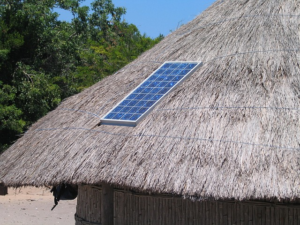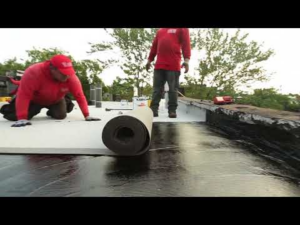
MONTICELLO, Minnesota — Silflower was among native plants that blanketed the vast North American prairie until settlers developed farms and cities. Nowadays confined largely to roadsides and ditches, the long-stemmed cousin of the sunflower may be poised for a comeback, thanks to solar energy.
Researchers are growing silflower at nine solar installations in the Minneapolis area, testing its potential as an oilseed crop. The deep-rooted perennial also offers forage for livestock and desperately needed habitat for bees, butterflies and hummingbirds.
“We need a lot of plots spaced pretty far apart to measure silflower’s effects on pollinators,” said crop scientist Ebony Murrell of The Land Institute, a research nonprofit. “The solar industry is interested in restoring pollinator habitat. This seemed to be a good partnership.”
Solar is a renewable energy source that can help wean the world off fossil fuels that produce greenhouse gases. But it also could benefit the environment and economy in ways not as well known.
As the industry grows, solar arrays will sprawl across millions of acres — wasting farmland, critics say. But advocates see opportunities to diversify crop production and boost landowner income, while repairing ecological damage to ground plowed under or paved over.
“There’s lots of spaces where solar could be integrated with really innovative uses of land,” said Brendan O’Neill, a University of Michigan environmental scientist who is monitoring how planting at a new 1,752-panel facility in Cadillac, Mich., stores carbon.
Elsewhere, solar installations host sheep that reduce need for mowing. And researchers are experimenting with crop growing beneath solar panels, while examining other potential upsides: preventing soil erosion, and conserving and cleansing water.
MIXED USES STUDY
The U.S. Department of Energy is funding a quest for best uses of lands around solar farms. The project, called InSPIRE, involves the National Renewable Energy Laboratory, Argonne National Laboratory and other partners conducting research at 25 sites nationwide.
The U.S. has about 2,500 solar operations on the electric grid, most generating one to five megawatts, according to the Energy Information Administration. A five-megawatt facility needs around 40 acres. While some occupy former industrial sites, larger installations often take space once used for row crops.
Depending on how quickly the nation switches to renewable electricity, up to 10 million acres could be needed for solar by 2050 — more than the combined area of Massachusetts and New Jersey, an analysis by Argonne found.
Solar developers and researchers hope projects with multiple land uses will ease pushback from rural residents who don’t want farmland taken out of production or consider solar panels a blight.
“We need healthy agricultural communities, but we also need renewable energy,” said Jordan Macknick, the renewable energy lab’s lead analyst for InSPIRE.
BUZZ AND FUZZ
At Cascadilla Community Solar Farm in upstate New York, sheep munch grasses among solar panels while bees and butterflies collect pollen from native …….
Source: https://www.nwaonline.com/news/2021/nov/07/move-to-solar-energy-creating-crop-economic/?business






